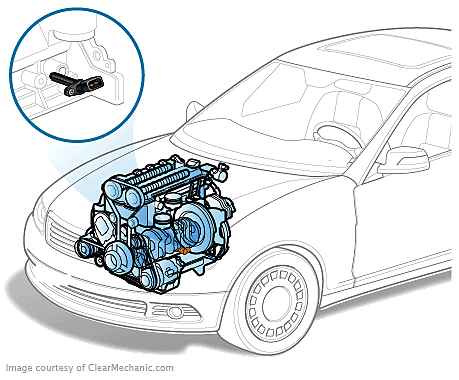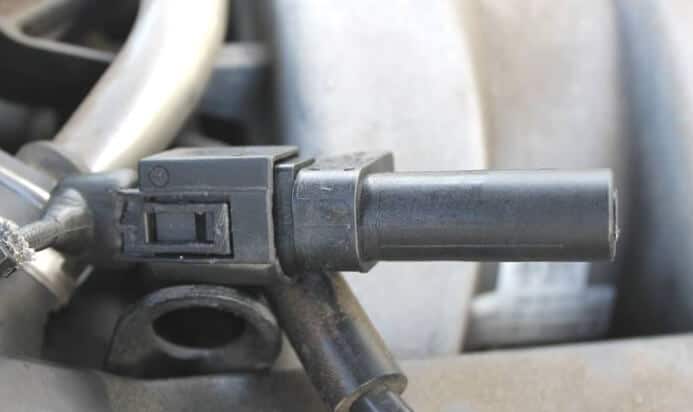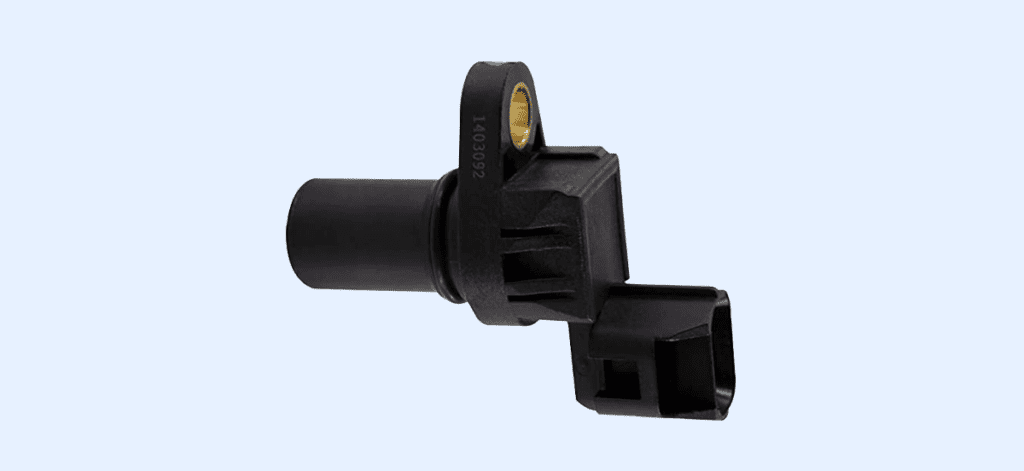If your car is running rough, stalling, or having trouble starting, it could be a problem with the crankshaft position sensor. This small component is responsible for monitoring the position and speed of the crankshaft, which is crucial for the engine’s performance. In this guide, we’ll discuss everything you need to know about the crankshaft position sensor, including its replacement cost and how to keep it in good condition.
What is a Crankshaft Position Sensor?
A crankshaft position sensor is an electronic device that monitors the position and speed of the crankshaft in your car’s engine. It sends this information to the engine control module (ECM), which uses it to control the ignition and fuel injection systems. Without a functioning crankshaft position sensor, your engine may not start or run smoothly.

How Much Will it Cost to Replace a Crankshaft Position Sensor in Canada?
The cost to replace a crankshaft position sensor in Canada can vary depending on the make and model of your car, as well as the location of the repair shop. On average, you can expect to pay between $150 and $250 for parts and labor. The labor time for this repair is typically between 1 and 2 hours.
What are the Symptoms of a Faulty Crankshaft Position Sensor?
A faulty crankshaft position sensor can exhibit several symptoms, including:
1. Difficulty starting: A malfunctioning sensor may cause the engine to have trouble starting or fail to start altogether.
2. Stalling: The engine might stall suddenly while driving, especially at low speeds or when coming to a stop.
3. Intermittent engine misfires: A faulty sensor can lead to misfires or rough idling, causing the engine to shake or vibrate.
4. Poor engine performance: Reduced power, acceleration, and fuel efficiency can result from a malfunctioning crankshaft position sensor.
5. Check engine light: The check engine light may illuminate on the dashboard, indicating a problem with the sensor or another engine-related issue.
6. Erratic or fluctuating engine speed: A defective sensor can cause the engine RPM to fluctuate unexpectedly, even when the vehicle is stationary.
7. Transmission issues: Inaccurate crankshaft position data can affect the transmission, leading to rough or erratic gear shifts.
How Long Does a Crankshaft Position Sensor Last?
A crankshaft position sensor can last for several years, but its lifespan can be affected by a variety of factors, including driving conditions and maintenance habits. It’s important to have your sensor inspected and replaced as needed to ensure that your engine is running smoothly.
How does a Crankshaft Position Sensor Become Defective?
A crankshaft position sensor can become defective due to various factors, including:
1. Wear and tear: Over time, the sensor can wear out due to regular use, leading to reduced performance or complete failure.
2. Heat and temperature changes: Prolonged exposure to high temperatures or frequent temperature fluctuations can cause the sensor’s internal components to degrade.
3. Dirt and debris: Contaminants like dirt, dust, or oil can accumulate on the sensor, obstructing its ability to accurately detect the crankshaft’s position.
4. Corrosion: Moisture and corrosive substances can cause the sensor’s electrical connections or components to corrode, resulting in poor signal transmission or sensor failure.
5. Damaged wiring: Wiring connected to the sensor can become damaged, frayed, or loose, interrupting the flow of information between the sensor and the engine control module (ECM).
6. Manufacturing defects: In some cases, the sensor may have been faulty from the start due to manufacturing defects or poor-quality materials.
7. Physical damage: The crankshaft position sensor can suffer physical damage from road debris, accidents, or improper handling during maintenance or repairs.

How A Faulty Crankshaft Position Sensor can affect other systems in the car?
• Engine performance: A faulty crankshaft position sensor can lead to poor engine performance, including hesitation, rough idling, and stalling.
• Ignition timing: The sensor’s inaccurate data can result in improper ignition timing, causing misfires and reduced engine efficiency.
• Fuel injection: Inaccurate crankshaft position data can affect fuel injection timing and quantity, leading to poor fuel economy and increased emissions.
• Transmission operation: The sensor’s malfunction may impact the transmission’s smooth operation, causing rough or erratic gear shifts.
• Starting issues: A faulty sensor can cause difficulty starting the engine or even prevent the engine from starting at all.
• Engine management system: The engine control module (ECM) relies on the crankshaft position sensor’s data for optimal functioning, so a faulty sensor can disrupt the entire engine management system.
• Increased emissions: Due to improper combustion, a malfunctioning sensor can cause the vehicle to produce higher emissions, potentially leading to a failed emissions test.
Is it Safe to Drive with a Faulty Crankshaft Position Sensor?
Driving with a faulty crankshaft position sensor is not advisable, as it can lead to a variety of issues that compromise the safety and reliability of your vehicle. The crankshaft position sensor plays a critical role in the engine management system, providing information about the engine’s rotational speed and position. This data is used by the engine control module (ECM) to adjust ignition timing, fuel injection, and other engine parameters. If the crankshaft position sensor is not functioning correctly, the engine may experience poor performance or even fail to start.
In some cases, a malfunctioning crankshaft position sensor can cause the engine to stall unexpectedly, posing a significant safety risk while driving. Loss of power, poor acceleration, and difficulty starting the engine can also result from a faulty sensor, making it challenging to navigate traffic or merge onto highways. Additionally, a defective crankshaft position sensor can lead to increased fuel consumption, increased emissions, and potential damage to other engine components if left unaddressed. To ensure the safety and reliability of your vehicle, it’s essential to have a professional mechanic diagnose and repair a faulty crankshaft position sensor as soon as possible.
How Can I Make My Crankshaft Position Sensor Last Longer?
To ensure that your crankshaft position sensor lasts as long as possible, follow these tips:
• Keep your engine clean and free of debris
• Check your electrical connections regularly
• Follow the manufacturer’s recommended maintenance schedule
• Address any engine performance issues promptly

Conclusion
A faulty crankshaft position sensor can cause a variety of issues with your car’s engine and other systems. By understanding the symptoms of a faulty sensor and taking steps to maintain it properly, you can ensure that your engine is running smoothly and avoid costly repairs. If you suspect that your crankshaft position sensor is faulty, have it inspected and replaced by a qualified mechanic as soon as possible.
Next Steps
Book Your Crankshaft Position Sensor Replacement Service
The service most frequently booked by those who read this article is Crankshaft Position Sensor Replacement. Uchanics’ expert technicians make the process even more convenient by bringing the service right to your doorstep. We perform this job at your home or office, covering over 40 cities in Ontario, including Oshawa, Ajax, Toronto, Scarborough, Mississauga, Brampton, and more. Our commitment to excellence has earned us more than 700 glowing 5-star reviews. Choose Uchanics for your Crankshaft Position Sensor Replacement and experience unparalleled convenience and top-quality service.
